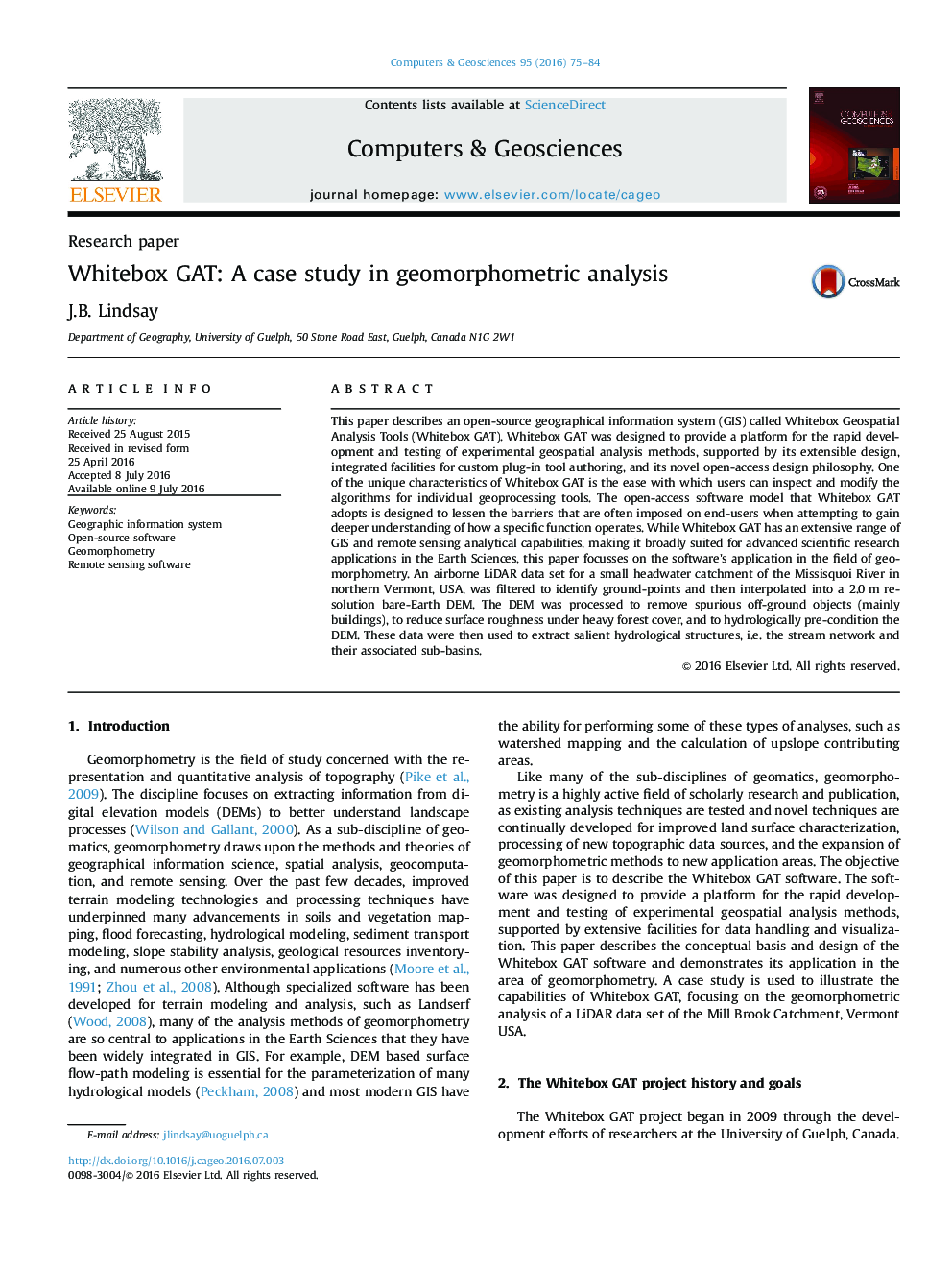| کد مقاله | کد نشریه | سال انتشار | مقاله انگلیسی | نسخه تمام متن |
|---|---|---|---|---|
| 506791 | 865040 | 2016 | 10 صفحه PDF | دانلود رایگان |
• A new open-source geographical information system is introduced.
• Whitebox is a platform for developing and testing geospatial analysis techniques.
• The open-access project model facilitates experimenting with existing functionality.
• The paper demonstrates Whitebox GAT's capabilities for geomorphometric processing.
• The hydrological structure of a small catchment is modeled using LiDAR data.
This paper describes an open-source geographical information system (GIS) called Whitebox Geospatial Analysis Tools (Whitebox GAT). Whitebox GAT was designed to provide a platform for the rapid development and testing of experimental geospatial analysis methods, supported by its extensible design, integrated facilities for custom plug-in tool authoring, and its novel open-access design philosophy. One of the unique characteristics of Whitebox GAT is the ease with which users can inspect and modify the algorithms for individual geoprocessing tools. The open-access software model that Whitebox GAT adopts is designed to lessen the barriers that are often imposed on end-users when attempting to gain deeper understanding of how a specific function operates. While Whitebox GAT has an extensive range of GIS and remote sensing analytical capabilities, making it broadly suited for advanced scientific research applications in the Earth Sciences, this paper focusses on the software's application in the field of geomorphometry. An airborne LiDAR data set for a small headwater catchment of the Missisquoi River in northern Vermont, USA, was filtered to identify ground-points and then interpolated into a 2.0 m resolution bare-Earth DEM. The DEM was processed to remove spurious off-ground objects (mainly buildings), to reduce surface roughness under heavy forest cover, and to hydrologically pre-condition the DEM. These data were then used to extract salient hydrological structures, i.e. the stream network and their associated sub-basins.
Journal: Computers & Geosciences - Volume 95, October 2016, Pages 75–84
